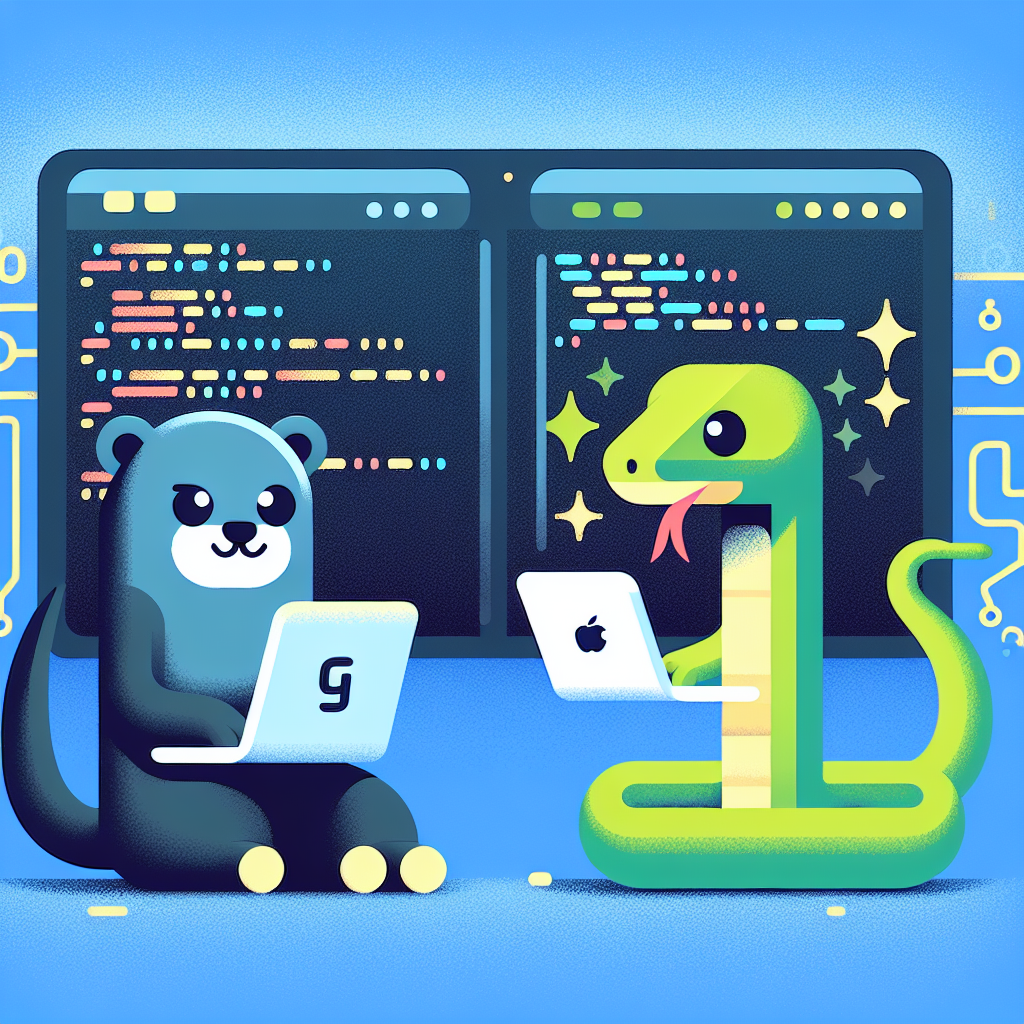Go vs Python: Ultimate Programming Language Showdown

Introduction
In the ever-evolving landscape of programming languages, choosing the right tool for your project can be a daunting task. The debate of “Go vs Python” often emerges when developers seek efficient, scalable, and easy-to-use languages. Both Go, developed by Google, and Python, a versatile and widely-used language, offer unique advantages and cater to different needs. This blog post will explore the programming language differences, provide a Go language comparison, and discuss Python alternatives, helping you make an informed decision.
Overview of Go and Python
Go Language
Go, also known as Golang, was created by Google engineers Robert Griesemer, Rob Pike, and Ken Thompson in 2007 and released to the public in 2009. It is designed for simplicity, performance, and efficiency, particularly in concurrent systems.
Key Features of Go:
- Concurrency: Go provides built-in support for concurrent programming through goroutines, making it ideal for high-performance applications.
- Static Typing: Go is statically typed, which helps catch errors at compile-time, improving code reliability.
- Fast Compilation: The language compiles quickly, enhancing development speed.
- Garbage Collection: Automatic memory management is a core feature of Go.
Python Language
Python, created by Guido van Rossum and first released in 1991, is celebrated for its simplicity and readability. It is a high-level, dynamically typed language with a broad range of applications.
Key Features of Python:
- Readable Syntax: Python’s syntax is clean and easy to learn, making it a popular choice for beginners.
- Vast Libraries: It boasts a rich ecosystem of libraries and frameworks, supporting fields like web development, data science, and machine learning.
- Dynamic Typing: Python’s dynamic typing allows for more flexible coding.
- Interpreted Language: Code execution is immediate, which is beneficial for quick prototyping and testing.
Go vs Python: A Comparative Analysis
Performance and Speed
When it comes to raw performance, Go generally outperforms Python due to its compiled nature. Go’s static typing and compilation process allow it to execute tasks faster, making it suitable for performance-critical applications.
Example:
// Go Example: Simple HTTP Server
package main
import (
"fmt"
"net/http"
)
func handler(w http.ResponseWriter, r *http.Request) {
fmt.Fprintf(w, "Hello, Go!")
}
func main() {
http.HandleFunc("/", handler)
http.ListenAndServe(":8080", nil)
}
## Python Example: Simple HTTP Server
from http.server import SimpleHTTPRequestHandler, HTTPServer
def run(server_class=HTTPServer, handler_class=SimpleHTTPRequestHandler):
server_address = ('', 8080)
httpd = server_class(server_address, handler_class)
print('Starting httpd...')
httpd.serve_forever()
run()
In the above examples, both languages set up a basic HTTP server, but Go’s server tends to handle more requests per second with lower latency.
Ease of Use
Python’s syntax is beginner-friendly, making it easier to learn and use. Its extensive libraries simplify complex tasks, which is why it is often recommended for rapid development and scripting.
Concurrency
Go has a clear edge in concurrency support with its goroutines and channels. These features are built into the language, allowing developers to write concurrent programs without the complexity seen in other languages.
Community and Ecosystem
Python’s long-standing presence has cultivated a large community and a rich ecosystem. The language’s versatility is evident in its application across various domains, from web development to artificial intelligence.
Go, while newer, has grown rapidly, especially in the cloud and server-side applications. Its community is active, though not as extensive as Python’s.
Use Cases and Applications
When to Use Go
- Concurrent Applications: Ideal for applications that require high concurrency, such as network servers and cloud services.
- Performance-Critical Systems: Use Go when performance is crucial and you need efficient resource management.
- Microservices: Go’s simplicity and speed make it a great choice for microservices architecture.
When to Use Python
- Data Science and Machine Learning: Python’s libraries like NumPy, Pandas, and TensorFlow are industry standards.
- Web Development: Frameworks such as Django and Flask make Python a popular choice for web applications.
- Rapid Prototyping: Python’s simplicity allows developers to quickly build and iterate on ideas.
Conclusion
The choice between Go and Python ultimately depends on your project’s specific needs. Go excels in performance and concurrency, making it a strong candidate for server-side applications and systems programming. Python, with its vast libraries and ease of use, is ideal for data science, web development, and rapid prototyping. Understanding these programming language differences will guide you in selecting the right tool for your next project. Whether you opt for Go or explore Python alternatives, both languages offer powerful capabilities to bring your ideas to life.